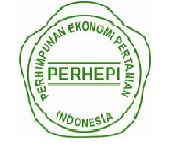Pemanfaatan Sistem Embung Sebagai Sumber Air dan Pangan Keluarga di Desa Cikalong Tasikmalaya Jawa Barat
Abstract
Utilizing the Pond as A Water and Food Source in Cikalong Village Tasikmalaya West Java. Cikalong Village is administratively in the Tasikmalaya Regency, West Java, often experiencing drought every year, chiefly in the dry season, when the local people have difficulty obtaining water to meet their daily needs. The method used in the activity was a direct observation, interviews, and FGD (Focus Group Discussion). The number of people involved is 10-15 people, in which there are community leaders and farmers. This activity aims to determine the contribution and benefits of the pond, especially in the dry season which is prone to drought. Ponds can be an alternative solution, apart from being a water source, their function can also be developed for fish cultivation with an aquaculture system and vegetables with an aqua-plants system. Both systems are able to meet food needs on a family scale well, with the integration of various types of fish such as Cyprinus carpio, Oreochromis mossambicus and vegetables such as chili, leeks, tomatoes. The results of the activity showed that the benefits of making ponds around the house with sizes of 10x10 m, 5x5 m, and 3x3 m and in gardens with sizes 10x20 m to 20x20 are as water storage, fish cultivation and plant cultivation. The pond was a form of adaptation and mitigation of local communities in responding to the effects of drought properly. The Cikalong Village community can be categorized as a community that has a fairly high sensitivity to the surrounding environmental conditions in recognizing and mitigating drought problems.
Keywords
Full Text:
PDF (Bahasa Indonesia)References
Aliyev, G. F., & Khalilova, K. H. (2014). The anthropogenic impact on surface water resources in Azerbaijan. Energy & Environment, 25(2), 343–356. https://www.jstor.org/stable/43735263
Anderson, M. D. C. (2015). The role of knowledge in building food security resilience across food system domains. Journal of Environmental Studies and Sciences, 5(4), 543–559. https://doi.org/10.1007/s13412-015-0311-3
Bommarco, R., Kleijn, D., & Potts, S. G. (2013). Ecological intensification: Harnessing ecosystem services for food security. Trends in Ecology and Evolution, 28(4), 230–238. https://doi.org/10.1016/j.tree.2012.10.012
Céréghino, R., Boix, D., Cauchie, H. M., Martens, K., & Oertli, B. (2014). The ecological role of ponds in a changing world. Hydrobiologia, 723, 1–6. https://doi.org/10.1007/s10750-013-1719-y
Dale, H. V, Brown, S., Hauber, R. A., Hobbs, N. T., Huntly, N., Naiman, R. J., Riebsame, W. E., Turner, M. G., & Valone, T. J. (2000). Ecological princiles and guidelines for managing the use of land. Ecological Applications, 10(3), 639–670. https://doi.org/10.1890/04-0922
Dharmarao, S, S. (2016). Water harvesting a solution to drought and falling level of ground water. International on “Emerging Research Trends in Applied Engineering and Technology.
Duguma, L. A., Minang, P. A., & Van Noordwijk, M. (2014). Climate change mitigation and adaptation in the land use sector: From complementarity to synergy. Environmental Management, 54(3), 420–432. https://doi.org/10.1007/s00267-014-0331-x
Haddeland, I., Heinke, J., Biemans, H., Eisner, S., Flörke, M., Hanasaki, N., Konzmann, M., Ludwig, F., Masaki, Y., Schewe, J., Stacke, T., Tessler, Z. D., Wada, Y., & Wisser, D. (2014). Global water resources affected by human interventions and climate change. Proceedings of the National Academy of Sciences of the United States of America, 111(9), 3251–3256. https://doi.org/10.1073/pnas.1222475110
Khatri, N., & Tyagi, S. (2015). Influences of natural and anthropogenic factors on surface and groundwater quality in rural and urban areas. Frontiers in Life Science, 8(1), 23–39. https://doi.org/10.1080/21553769.2014.933716
Kristiyanto. (2020). Traditional development of water conservation based on local knowledge: Coping with climate change impacts in rural areas. IOP Conference Series: Earth and Environmental Science, 423, 1–7. https://doi.org/10.1088/1755-1315/423/1/012067
Murphy, D., & Kitamirike, J. (2019). Integrating climate adaptation in water catchment planning in Uganda. National Adaptation Plan Global Network, 1–12.
Nanekely, M., & Scholz, M. (2017). Sustainable management of rainwater harvesting systems: A case study of a semi-arid area. In G. Tsakiris, V. A. Tsihrintzis, H. Vangelis, & D. Tigkas (Eds.), European Water (pp. 933–939). E.W. Publications.
Pires, A., Chang, N. Bin, & Martinho, G. (2011). Reliability-based life cycle assessment for future solid waste management alternatives in Portugal. International Journal of Life Cycle Assessment, 16(4), 316–337. https://doi.org/10.1007/s11367-011-0269-7
Rabbani, M. G., Rahman, S. H., & Munira, S. (2018). Prospects of pond ecosystems as resource base towards community based adaptation (CBA) to climate change in coastal region of Bangladesh. Journal of Water and Climate Change, 9(1), 223–238. https://doi.org/10.2166/wcc.2017.047
Shava, E., & Gunhidzirai, C. (2017). Fish farming as an innovative strategy for promoting food security in drought risk regions of Zimbabwe. Jamba: Journal of Disaster Risk Studies, 9(1), 1–10. https://doi.org/10.4102/jamba.v9i1.491
Silondae, H., Lintang, M., & Amiruddin, A. (2021). Use of yard land as a source of nutrition and family economy during covid-19 pandemic. IOP Conference Series: Earth and Environmental Science, 807, 1–9. https://doi.org/10.1088/1755-1315/807/2/022001
Tolossa, T. T., Abebe, F. B., & Girma, A. A. (2020). Review: Rainwater harvesting technology practices and implication of climate change characteristics in Eastern Ethiopia. Cogent Food and Agriculture, 6(1). https://doi.org/10.1080/23311932.2020.1724354
Zari, M. P. (2014). Ecosystem services analysis in response to biodiversity loss caused by the built environment. Sapiens, 7(1).
Zhang, L., Hartvig, M., Knudsen, K., & Andersen, K. H. (2014). Size-based predictions of food web patterns. Theoretical Ecology, 7, 23–33. https://doi.org/10.1007/s12080-013-0193-5
DOI: https://doi.org/10.20961/prima.v5i2.41255
Refbacks
- There are currently no refbacks.
View My Stats

This work is licensed under a Creative Commons Attribution-ShareAlike 4.0 International License.


.jpg)



1.jpg)











